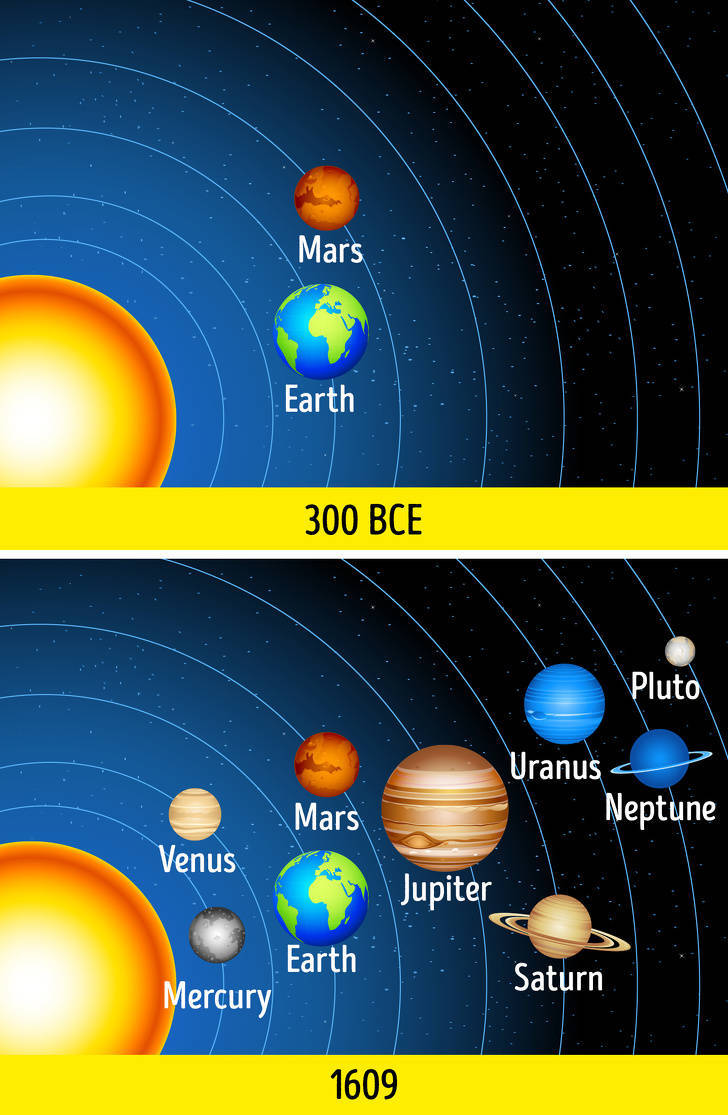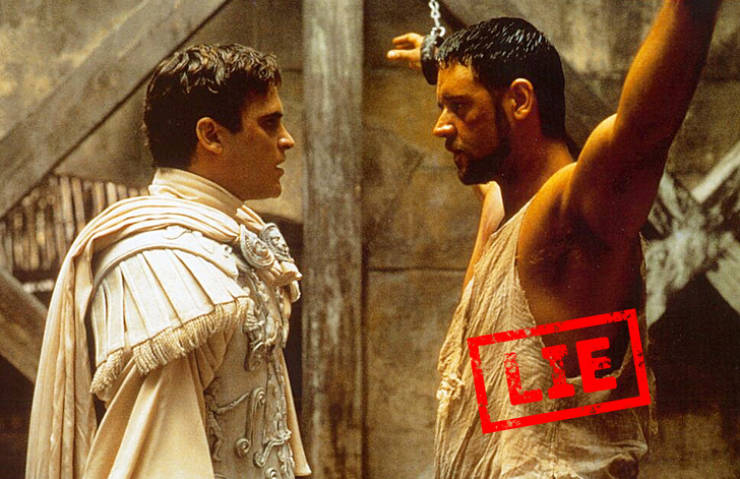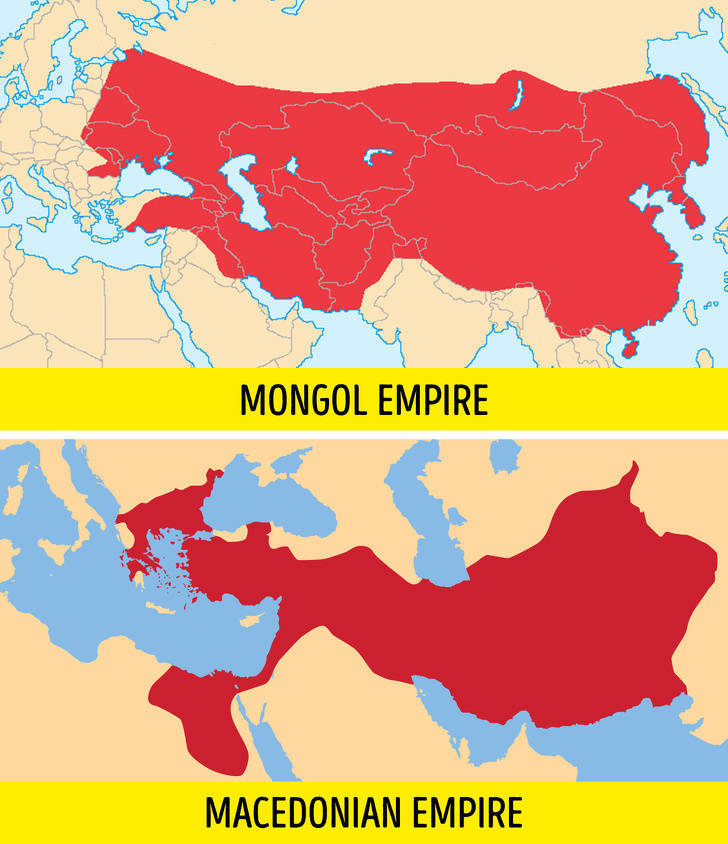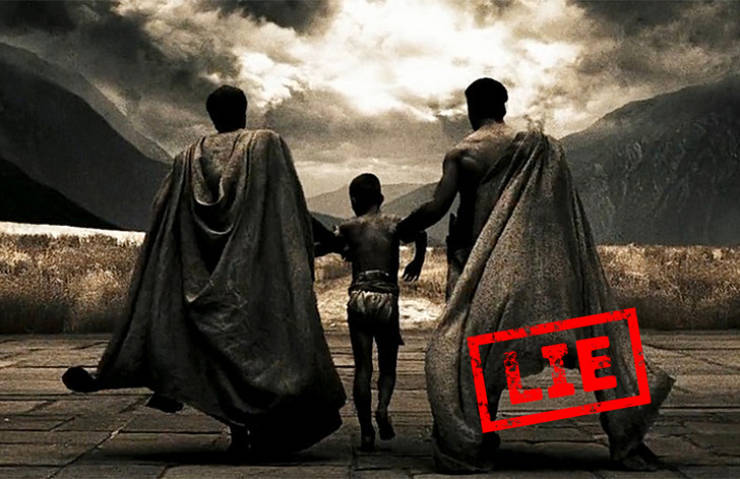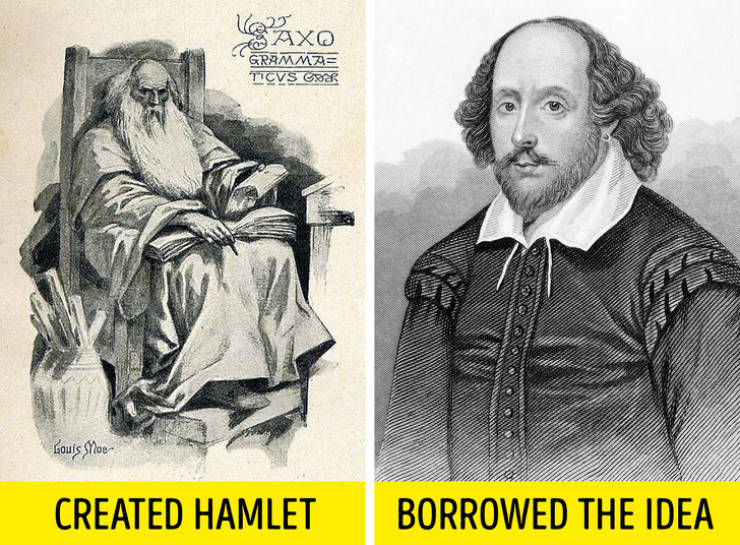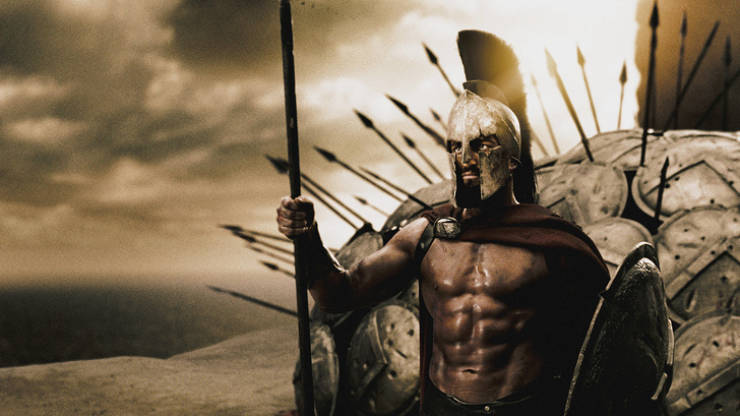Myth № 1: Galilei was the first person to think that Earth revolved around the sun.
This was not necessarily true. In fact, this is a huge generalization of facts. People realized that our planet wasn’t the center of the universe in 300 BCE.
Greek scientist, Aristarchus of Samos was the first person to suggest this idea. However, there was no way to prove this theory and only until the 16th century did astronomer Nicolaus Copernicus decide to work on this theory. There were a lot of people who disagreed with him but he also had a lot of supporters like for example, Galilei. So, Galilei did not suggest this theory but rather, he was the one to actually prove it thanks to the telescope he managed to invent.
Myth № 2: Gladiators were slaves.
The mass culture often shows gladiators as slaves who were taught to fight. They fought and killed each other for people’s entertainment. But if we take a closer look at historical facts, we will find out that their lives were not so tragic. In the beginning, the fighters were really chosen from local slaves, conquered people, and criminals.
But as gladiator fights became more and more popular, free people started coming to gladiator schools. Most of the time, they were ex-soldiers who wanted to win money. Later, even noble people would become gladiators. They did it to become famous and nobody forced them to fight to their death.
Myth № 3: Alexander the Great had the biggest empire in human history.
Alexander the Great created a huge empire not only by the standards of the time but even by today’s standards. This is why he is believed to be the greatest conqueror of all time. But if we take a look at actual facts, we will see that the Mongol Empire was actually the biggest in the world.
In the 12th-14th centuries, the Mongols owned all of Central Asia, China, the Middle East, Korea, and Eastern Europe all the way up to Austria. To put this in perspective: Alexander the Great only had ancient Egypt, a part of Persia, and a part of India. Also, right after the monumental Alexander the Great died, his empire ceased to exist whereas the Mongol Empire existed for a much longer time.
Myth № 4: Ninjas wore black clothes.
Real ninjas had nothing to do with the heroes in black suits from movies. These people were spies and assassins in medieval Japan. Most likely, they were really good at martial arts but they definitely didn’t wear dark clothes and masks. A ninja’s goal was to blend in so that they could watch for the person of interest.
And this line of work was not respectful: their methods were considered dishonest, unlike the work of samurais. By the 17th century, there were almost no ninjas left. But the stories about them were still there: ninjas were believed to have supernatural powers like the ability to walk on water or move without making a sound, for example. But these are just stories and nothing more.
Myth № 5: In the Middle Ages, witches were burned.
Many people truly believe that thousands of innocent women were burned in Europe in the Middle Ages. But in fact, up to the 15th century, the church denied the fact that witches existed. The mass witch hunt started in the 16th and 17th centuries. The reason for this was the plague pandemic.
The diseases spread so quickly that 24% of the European population died in just several years. There was no remedy for it and people were in such a panic, they thought that it was caused by witchcraft. So by the 16th century, both the church and regular people were scared of magic and executed everything who had any connection to it. But witches were burned only to demonstrate this to people. Most of the time, they were hanged — this was the most popular way of execution.
Myth № 6: Spartans threw weak babies over the mountain.
Spartans were really tough about bringing up their future warriors. The fact that they threw weak babies over a mountain is known from the ancient Greek writer, Plutarch. But modern scientists believe that it’s either not true or it was just a one-time thing, not a regular phenomenon.
In ancient Sparta, there really was a tradition to throw people into pits, but it was only done to prisoners and criminals. Recent anthropological studies showed that the remains belonged to men aged 18 to 35. There were also other bones found, but there was no trace of newborn babies. So today, there is no evidence that Spartans killed weak babies.
Myth № 7: Only men could become pirates.
Very few people know that female pirates actually existed. Maybe it’s because it was really hard for them to get on a ship. Women were not allowed to sign a contract which was required from all crew members if they wanted to be aboard.
In order to join the crew, many women dressed up as men. But still, many papers have records about them (names and other facts). This phenomenon was spread in different countries like Norway, England, France, and China.
Myth № 8: Shakespeare created Hamlet.
One of the most famous Shakespeare plays is Hamlet. However, very few people know that it is actually based on a different piece — The Life of Amleth. It was written by Saxo Grammaticus in the 13th century.
The plotlines of both plays are almost identical: the main character is Amleth, the Prince of Denmark. The young man was mad because of his mother’s hasty marriage to the usurper, so he kills him.
Myth № 9: In the Middle Ages, the average life expectancy was just 30 years.
The most dangerous time period for a person in the Middle Ages was infancy. The mortality of babies was as high as 50%. This statistical information distorts the real picture of how long people of that time lived. The people who managed to survive infancy had a very good chance of living to 40, 50, and even 60 years.
On average, men died at the age of 45. Women lived for about 50 years and the most wealthy people even lived up to 65. Of course, there were more chances to die: pandemics, wars, and bad medicine which were also factors. And of course, life in the Middle Ages was much harder than it is now. But it was not as bad as many people think today.
Myth № 10: Only 300 Spartans fought against a Persian army of thousands of soldiers.
The feat of 300 Spartan warriors has become the plot of many books, movies, and even videogames. However, mass culture often tells us a twisted and tweaked version of real historical events. In the Battle of Thermopylae, 300 Spartan warriors with Leonid took place. But they were also supported by Greek warriors. So the Persians had to fight against a 5,000 to 7,000-soldier army.
However, the Spartans were really almost the only ones who fought to the end. And the Persian army was more than 20,000 men. So the Spartans were heroes anyway.

